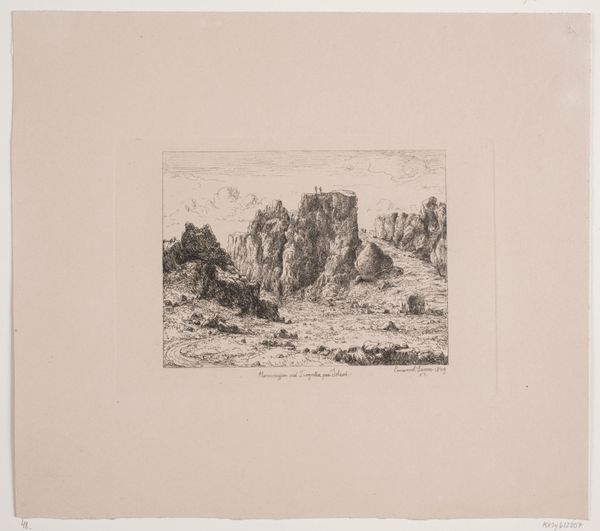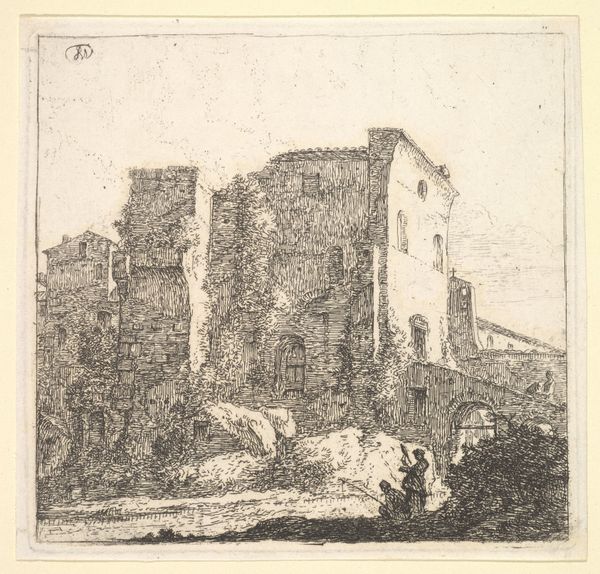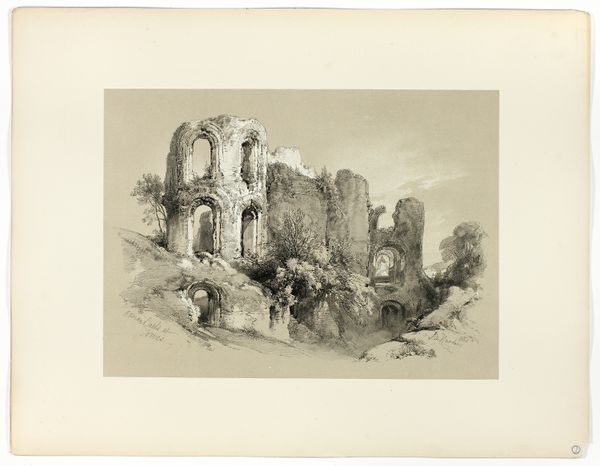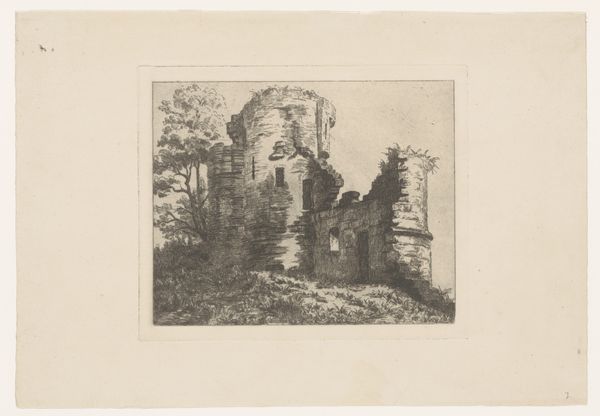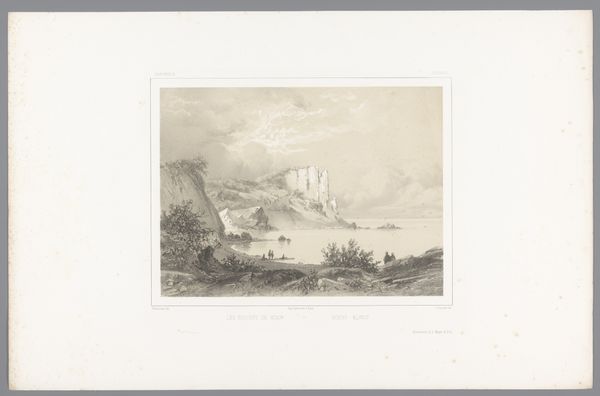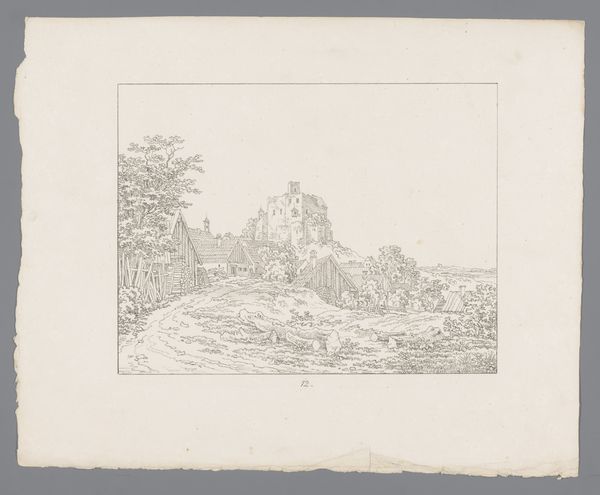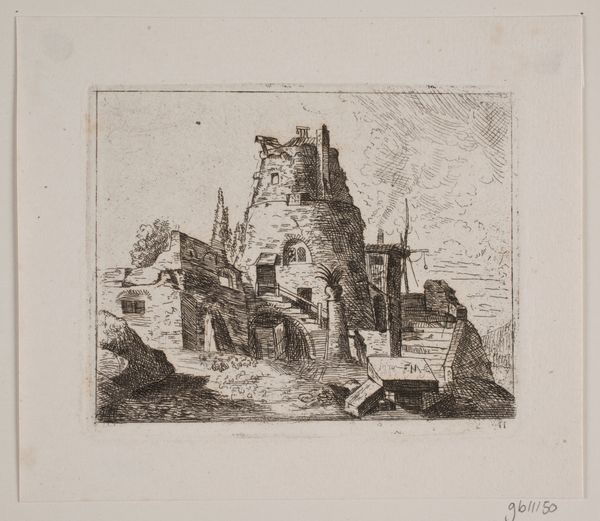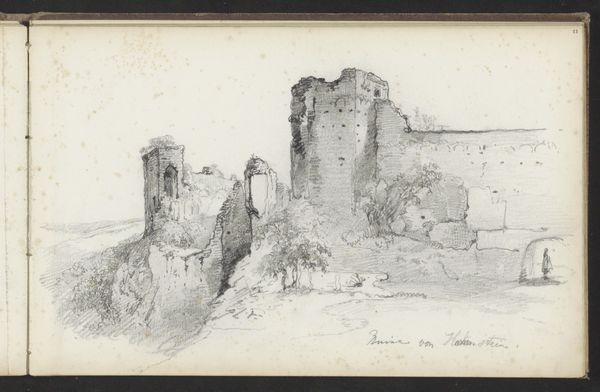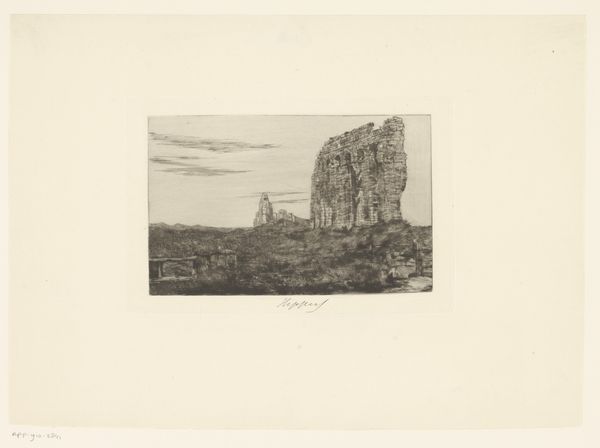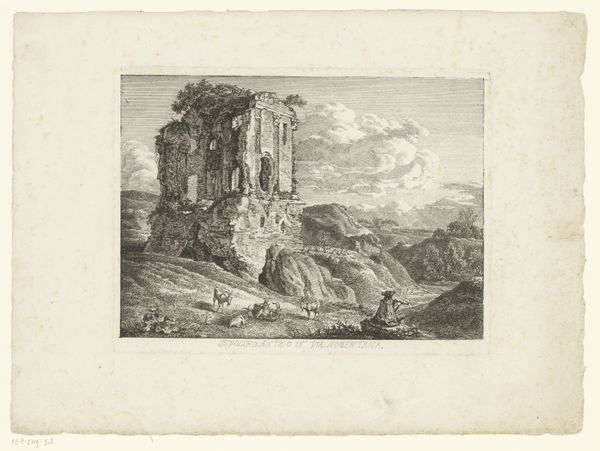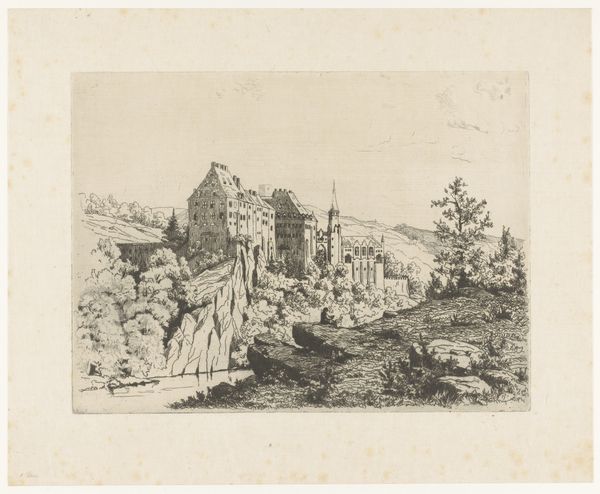
print, engraving
# print
#
landscape
#
line
#
engraving
#
realism
Dimensions: 157 mm (height) x 176 mm (width) (plademaal)
Curator: This engraving, titled "Bornholmsk klippekyst," depicts a stark coastal scene. Rendered with precise lines, it shows a section of rocky coastline in Bornholm, dating back to 1843. Editor: The cliffs seem monumental, but rendered with such delicate lines. It creates an oddly intimate, almost dreamlike feel. There's something about the light that suggests an early dawn. Curator: The precision of the engraving really does bring to mind a scientific illustration as much as it evokes an atmospheric scene. Note the contrasts, especially where light catches the angular planes of those imposing cliffs, then dissolving into shadow on the right. Editor: Yes, but what does it mean to look at this landscape? Landscapes can signify identity, belonging… What’s being said here? Is it a romantic vision or something more analytical? It makes me think about colonial mappings of the Danish landscape and who benefited. Curator: That’s an interesting interpretation. Looking closely, those cliff formations could stand for resilience and fortitude. They suggest nature as an enduring force against the ceaseless waves of time. Bornholm might symbolize the persistence of memory. Editor: Possibly. Or perhaps it’s romanticising nature’s power while quietly erasing the labor of those who interact with that environment. Who has access to the coastline depicted? Whose stories are left out of the visual narrative? Curator: Those are necessary questions. However, from a more detached symbolic perspective, you see the cliffs—stoic and enduring. I notice how, for the engraver, the very act of painstakingly etching each line seems like an attempt to grasp the immutable character of the scene itself. Editor: Well, I am drawn back to the composition, how the artist plays with textures to bring forth both majesty and isolation. It invites questions regarding humanity’s place in nature, but I suppose my interpretation of those questions would lean toward highlighting themes of social power, historical marginalization and potential erasure. Curator: The artist definitely uses such direct lines to leave much to interpretation. Ultimately it is a provocative reminder of time and landscape. Editor: For me, it's a stark statement about who gets to shape our vision of landscape.
Comments
No comments
Be the first to comment and join the conversation on the ultimate creative platform.
